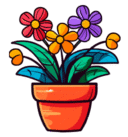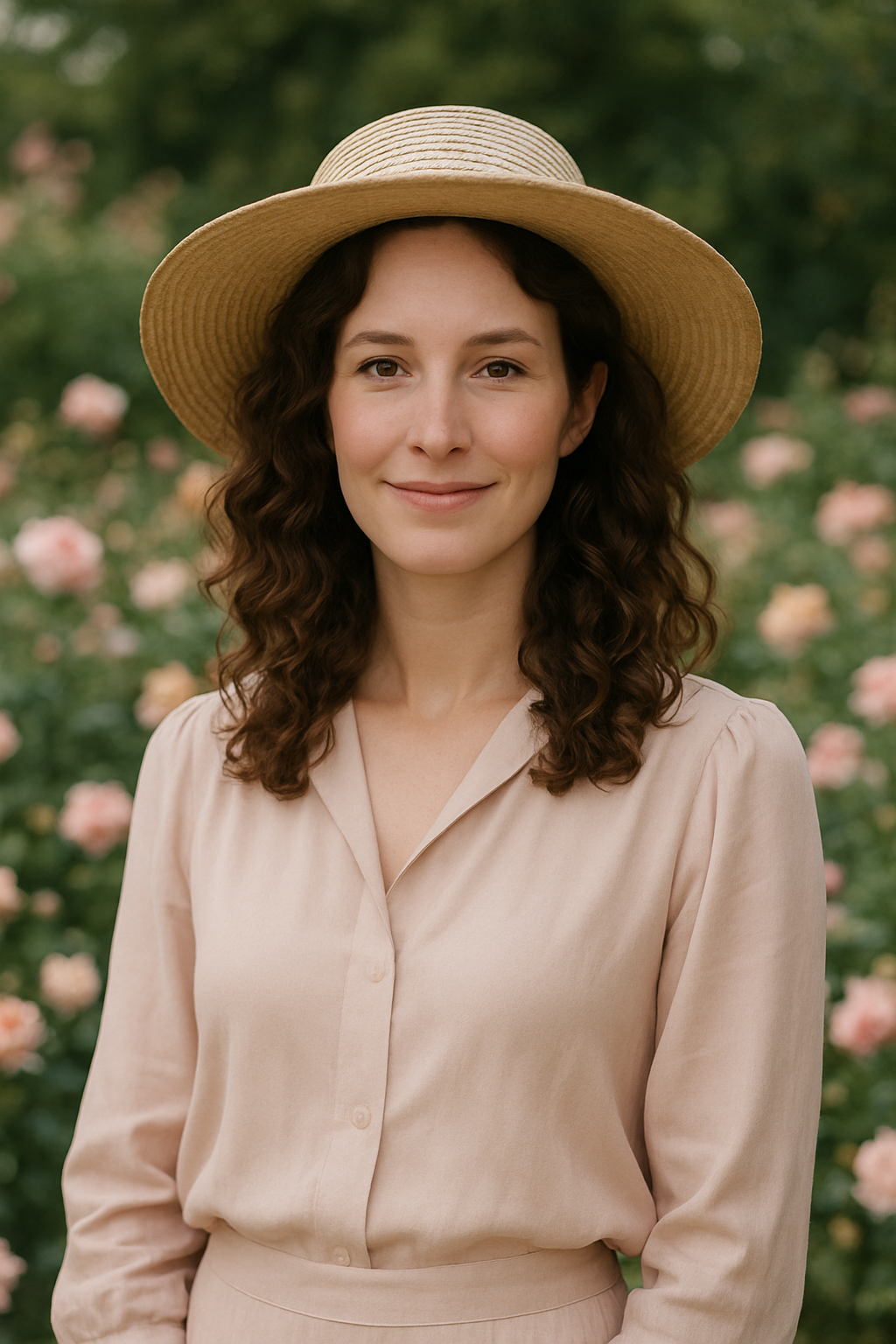I still remember my first dahlia. I picked it up from a local nursery, drawn in by a label that read “Dahlia Bulbs – Giant Mix.” I had no idea I was about to uncover one of the most common misunderstandings in the gardening world. Back home, as I opened the package and held a knobby, finger-like clump in my hand, I blinked. “This doesn’t look like any bulb I’ve seen before.”
That moment was the start of my journey from flower admirer to flower grower. Understanding the difference between dahlia bulbs vs tuber completely changed how I grow, store, and multiply these beauties — and today, I’m excited to help you feel that same clarity and confidence in your garden.
What Are Dahlia Tubers?
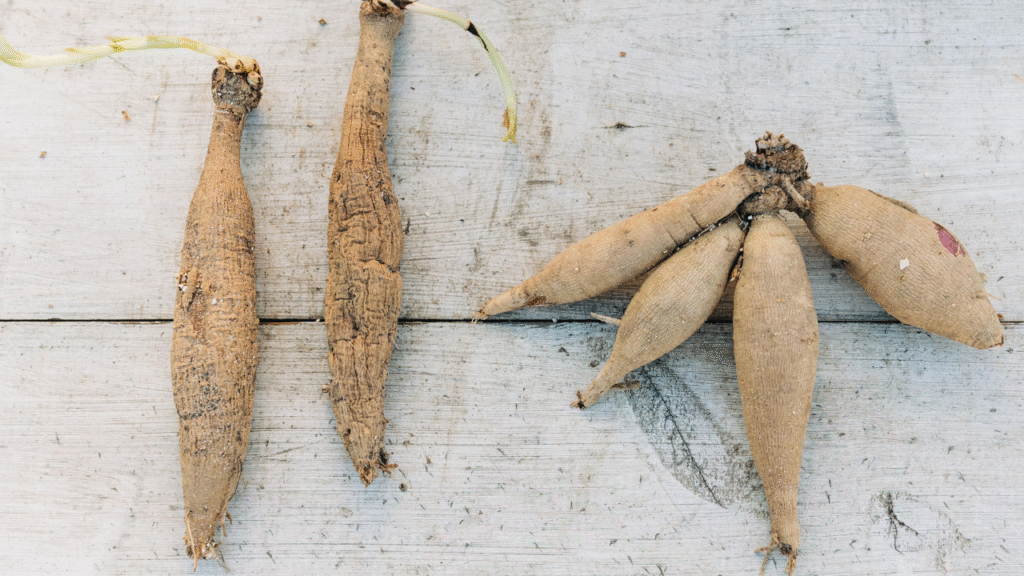
Unlike tulips or daffodils, dahlias don’t grow from traditional bulbs. They come from tubers, and knowing this small truth makes a big difference in how you care for them.
Structure and Function of a Dahlia Tuber
Dahlia tubers are thick, finger-like underground structures that store nutrients. Each tuber connects to a central stem or crown and, ideally, has an “eye” or bud where new growth will begin in spring.
These tubers are storage machines. Over winter, they hold onto moisture, sugar, and energy—everything the plant needs to regrow and bloom again when the temperatures rise. Think of them like a flower’s survival toolbox, patiently waiting underground for spring’s signal.
Are Tubers the Same as Roots?
It’s a common question—and an important one. No, tubers are not roots, even though they grow underground and look similar. Tubers are modified stems, not roots. That difference matters because only stem tissue can regenerate a new plant. Roots alone can’t do that.
A root delivers water. A tuber delivers life.
Why Dahlias Grow from Tubers, Not Bulbs
Dahlias are native to the highlands of Mexico and Central America. Their tuberous nature helps them survive dry seasons underground and then regrow quickly when conditions improve.
Bulbs, by contrast, have a compact, layered structure and typically produce a single bloom stalk. Dahlia tubers are more versatile—they often grow bushier plants and multiple flower stems. That’s why cut flower gardeners (like me!) adore them.
What Are Bulbs and How Are They Different?
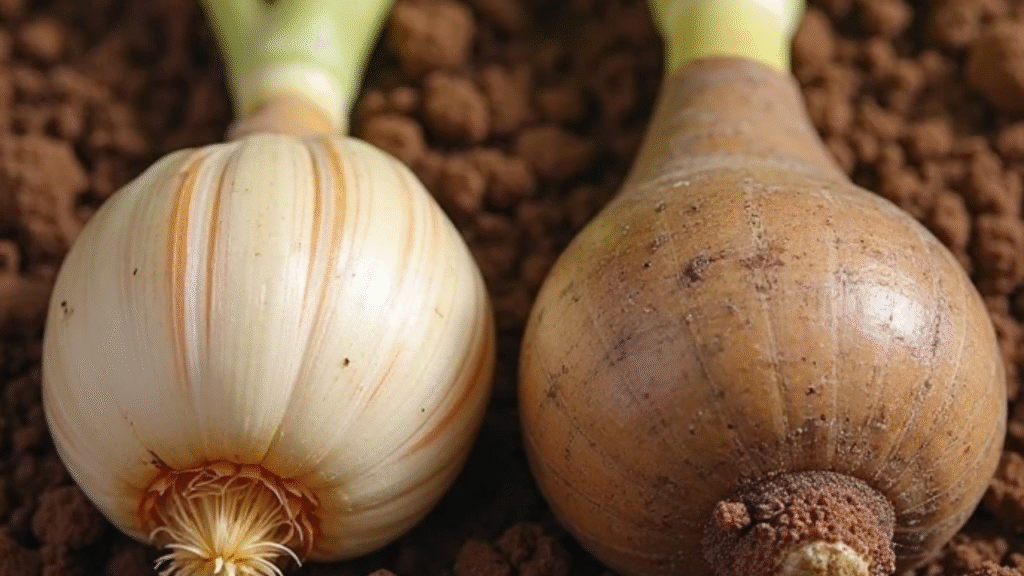
To fully appreciate why tubers are special, let’s understand what bulbs really are.
Examples of True Bulb Flowers (Tulips, Daffodils, etc.)
True bulbs have a very different design from tubers. They’re layered like an onion and contain both food storage and the baby flower inside. Classic examples include:
- Tulips
- Daffodils
- Hyacinths
- Lilies
You can slice a bulb open and see the flower bud waiting inside. It’s like a time capsule of bloom.
Key Differences Between Bulbs and Tubers (With Comparison Table)
| Feature | Bulbs | Tubers (like Dahlias) |
|---|---|---|
| Structure | Layered (like an onion) | Swollen stem or root tissue |
| Growth Point | Single central shoot | Multiple “eyes” or buds |
| Stored Inside | Food & entire flower embryo | Food only |
| Multiplication | Rarely divided | Easily divided |
| Common Examples | Tulips, Daffodils, Hyacinths | Dahlias, Potatoes, Caladiums |
| Planting Depth | Often shallow | Slightly deeper |
Understanding these differences helps you store, divide, and plant more confidently—and improves your flower success rate dramatically.
Why Dahlia Tubers Often Get Mistaken for Bulbs
The answer is simple: packaging and marketing. In stores and catalogs, anything that gets buried in the soil often gets labeled as a “bulb” to make things easier for customers. But biologically, this isn’t accurate.
When people see that label and then dig into a bag to find something that looks like a dried yam, it’s easy to feel confused. That’s totally normal—and now, you know the truth.
Why the Confusion Exists: Dahlia “Bulbs” in Garden Stores
Even experienced gardeners sometimes call them “bulbs”—but there’s a real reason behind the mix-up.
Marketing Language vs Botanical Accuracy
In the gardening world, “bulb” has become a catch-all phrase. It’s a convenience term, not a scientific one. Garden centers use “bulbs” because it’s easy and familiar to shoppers. But botanically speaking, it’s just not correct for dahlias.
As a flower grower, knowing the real terminology helps you better understand plant behavior, propagation, and storage. That’s where your expertise begins to grow.
What You’re Actually Buying When You Buy a “Dahlia Bulb”
When you pick up a package labeled “Dahlia Bulb,” you’re buying a dormant tuber—sometimes a single tuber, sometimes a clump.
Here’s what to look for:
- A solid, not shriveled tuber
- An “eye” or bud near the crown
- No mold, rot, or soft spots
If you care for them properly, that one little tuber can multiply into a whole family of flowers by next season.
Growing Dahlias: Seed vs Tuber Method
Both seeds and tubers can produce dahlias—but they offer very different experiences for the gardener.
When and Why You Might Use Seeds
Growing dahlias from seed is a fun way to explore variety. It’s also more affordable and perfect if you’re filling out a large garden space.
Seed method is best for:
- Gardeners on a budget
- Gardeners who love surprises
- Starting annual-style dahlias
But remember: seed-grown dahlias are genetically unpredictable. You might not get the exact bloom you expected!
Benefits of Growing from Tubers (Speed, Consistency, Blooms)
If you want to know exactly what flower will bloom, tubers are the way to go.
Benefits of tubers:
- Fast growth after last frost
- Guaranteed flower type and color
- Easier to divide and save each year
- Stronger stems and more blooms
Almost all commercial flower farmers grow from tubers for this reason.
Can You Grow Dahlias From Both? Pros & Cons
Absolutely! In fact, I use both in my garden.
Here’s a simple breakdown:
- Seeds
✔️Inexpensive
✔️ Easy to sow indoors
✖️Unpredictable flowers
✖️Slower to bloom - Tubers
✔️ Reliable bloom color
✔️ Quick growth
✔️ Divides easily for more plants
✖️ Requires proper winter storage
✖️ More costly upfront
How to Care for Dahlia Tubers (Not Bulbs!)
Dahlia tubers are living storage units—and like any living thing, they need the right care to thrive. Once you understand what they are, learning to store and plant them properly is the next big step.
Storing Tubers Over Winter
After the first frost blackens your dahlia foliage in fall, it’s time to dig up your tubers for storage—unless you’re in USDA zone 8 or warmer, where they can often overwinter in the ground.
Here’s how I do it each year:
- Gently dig up the clump, keeping tubers intact
- Rinse off excess soil and let them dry for 1–3 days
- Dust with sulfur to prevent rot
- Store in cardboard boxes filled with peat moss, vermiculite, or sawdust
- Keep them in a dark, cool spot (40–50°F) with moderate humidity
Pro Tip: Too cold and they’ll freeze. Too warm or humid, and they’ll rot. A dry basement or attached garage usually works well.
Preparing Tubers for Spring Planting
As winter fades and the ground begins to warm, I like to “wake up” my tubers in mid-spring.
Here’s my spring routine:
- Check for shriveled or moldy tubers—discard those
- Gently spritz slightly dried ones with water
- Set healthy tubers in trays with light, indirect warmth
- Watch for “eyes” (buds) to form on the crown before planting
It’s like watching your garden whisper, “I’m ready.”
Common Mistakes When Handling Tubers
Even experienced gardeners make these errors:
- ✖️ Planting upside down (the eye must face up)
- ✖️ Storing in sealed plastic—causes rot
- ✖️ Breaking off the eye—no eye = no plant
- ✖️ Skipping labeling—you’ll forget which is which!
Trust me, every tuber you handle teaches you something. With time, you’ll grow more confident.
Dahlia Tuber Splitting and Propagation Basics
One of the most exciting things about dahlias is that they multiply. A single tuber clump can become several plants next year—if you know how to split them right.
Why Split Tubers? (Health + Yield)
There are two main reasons I divide my tubers each year:
- Health – Removing old or damaged tubers prevents rot and disease
- Yield – Each healthy division can become a brand-new plant!
It’s like unlocking free flowers hidden inside the tubers you already have.
How to Identify Eyes Before Dividing
Each viable division must have at least:
- One eye (a small pinkish bud near the stem/crown)
- One tuber connected to that crown
No eye = no growth, so look closely. Sometimes eyes don’t appear until the tuber warms up a bit.
Use a clean, sharp knife and take your time—this is surgery for your garden.
Step-by-Step Splitting Guide for Beginners
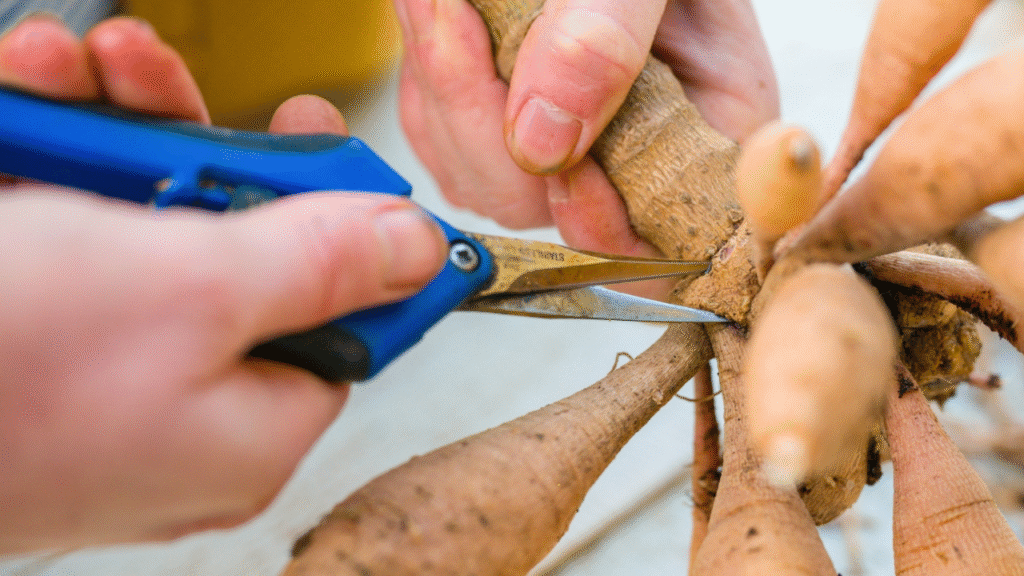
Here’s how I divide my tubers each spring:
- Lay out the dried clump on a clean towel
- Find the crown—where all tubers connect
- Locate the eyes (you may need a magnifier!)
- Cut each division with an eye + tuber
- Let dry for 12–24 hours before planting or storing
Label each division by variety so you don’t lose track later!
Quick Reference Table: Dahlia Tubers vs Bulbs
Here’s a quick at-a-glance comparison to help you remember the key differences:
| Feature | Dahlia Tubers | Bulbs (e.g. Tulips, Daffodils) |
|---|---|---|
| Structure | Swollen underground stems | Layered, onion-like storage organs |
| Growth Points | Multiple “eyes” per clump | Single central shoot |
| Propagation | Easy to divide | Rarely divided |
| Bloom Consistency | Very predictable by tuber type | Also predictable |
| Storage Needs | Cool, dark, breathable environment | Similar, but often easier to store |
| Common Confusion | Often sold as “bulbs” | Rarely mislabeled |
| Examples | Dahlias, Potatoes | Tulips, Hyacinths, Daffodils |
Final Thoughts: Why Terminology Matters in Gardening
Educating Yourself = Healthier Plants
When I first started, I didn’t think words mattered. But the more I gardened, the more I realized—language shapes knowledge. When you know your dahlia is a tuber, you store it differently. You plant it deeper. You don’t panic when it looks a little “ugly.” You understand it.
And when you understand a plant, it thrives.
Making Informed Buying Decisions as a Gardener
Once you understand the Dahlia bulbs vs tuber distinction, you’ll never be tricked by a garden label again. You’ll know how to check for firmness, how to spot an eye, and how to multiply your favorite flower without spending more money.
Knowledge makes you a better gardener—and a more confident one too.
FAQs About Dahlia Tubers vs Bulbs
1. What happens if I plant a dahlia seed instead of a tuber?
You’ll still get a beautiful plant, but the flower may look different from the parent plant. Seed-grown dahlias are great for experimentation but aren’t true to type.
2. Can you grow a dahlia from a bulb?
Technically, no. Dahlias don’t grow from bulbs. If you bought a “dahlia bulb,” it’s actually a tuber. Only tubers (or seeds) can grow dahlias.
3. How do I tell if my dahlia tuber is healthy?
A healthy tuber is firm, not mushy, with no mold. It should have at least one eye (bud) and not be overly shriveled. Wrinkling is okay; rotting is not.
4. What’s the best time to plant dahlia tubers?
After your last frost date, when the soil temperature reaches around 60°F. In most U.S. regions, this means late April to early May.
